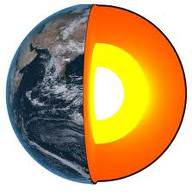[/caption]
You may not have heard much about geothermal energy but it is one of the hottest alternative energy commodities around. It is a renewable and clean energy source that will be around for a long time. However where does geothermal energy come from? The answer is the earth itself. The world geothermal comes from the Greek words geo which means earth and therme which means heat. Basically geothermal energy is heat energy harvested from the Earth itself.
Geothermal heat is produced by the core of the Earth itself. You may not think that energy to be much when compared to the sun but you would be wrong in some aspects. The Earth’s core alone is 11,000 degrees. That is hotter than the surface of the sun. The Earth’s geothermal energy is created by the decay of radioactie materials in the core and in the surrounding layers of rock.
However this still doesnt tell us how this energy becomes accessible. The deepest mankind can even go with the best technology is around 11 km. The answer is plate tectonics. bounadaries and faults are cracks in the Earth’s crust where magma rises near or to the surface. Geothermal plants take advantage of this fact using water heated by this volcanic activity to produce electric power.
The main place where geothermal energy can be used have not only volcanic activity but also enough ground water to be used to power the turbines that generate power. Prime areas are near volcanoes, hot springs, and geysers. Large volcanic islands like Greenland have vast resources in terms of geothermal energy. In the end the most common location for geothermal reservoirs will be where ever there are major plate boundaries with a lot of seismic and volcanic activity.
The benefits of geothermal energy is already being discussed in nations like Iceland as way to reduce reliance on foreign oil. Geothermal is abundant where it can be accessed and can easily produce energy on par with the output of other types of energy production such as nuclear reactors. The best part is that it is clean energy. There is no way it can produce pollution that can harm the environment. The only risk is that drilling in active volcanic area can make them vulnerable to earthquakes.
In the end Geothermal still one of the best possible sources of clean energy on the planet. As the technology improves for accessing it more homes around the world will have the opportunity to be powered by this renewable energy resource.
We have written many articles about geothermal energy for Universe Today. Here’s an article about Geothermal Energy, and here’s an article about how geothermal energy works.
If you’d like more info on Earth, check out NASA’s Solar System Exploration Guide on Earth. And here’s a link to NASA’s Earth Observatory.
We’ve also recorded an episode of Astronomy Cast all about planet Earth. Listen here, Episode 51: Earth.
Sources:
http://www.eia.gov/kids/energy.cfm?page=geothermal_home-basics
http://en.wikipedia.org/wiki/Geothermal_energy
http://www.clean-energy-ideas.com/articles/what_is_geothermal_energy.html

